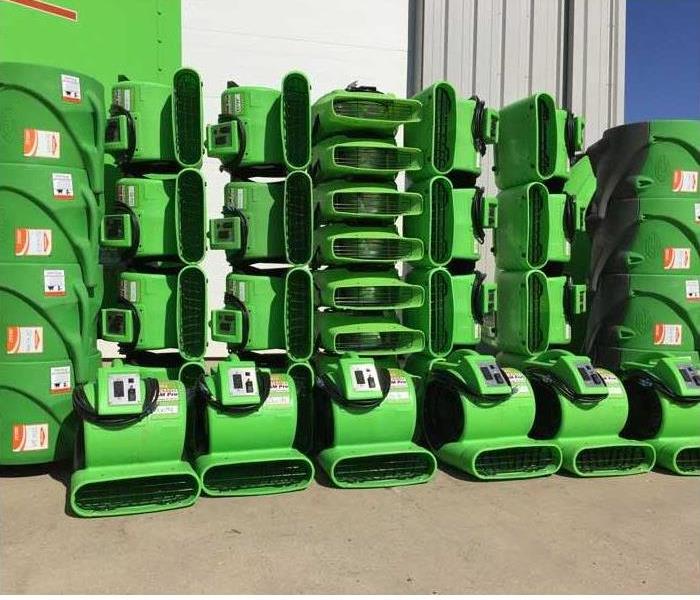What Are All These Green Machines
9/4/2018 (Permalink)
When water damage has occurred, water can be absorbed into the drywall (sheetrock), baseboards, subflooring, etc. Drying these surfaces requires high-velocity air movers to accelerate the release of absorbed water into the air. Dehumidifiers are necessary for removing this excess moisture to help protect property and create conditions for efficient drying.
TYPES OF AIR MOVERS
There are two types of industrial air movers we use at SERVPRO of Gainesville. Both types vary by direction and speed of airflow:
- Axial: Axial air movers blow large amounts of air in a wide space. These air movers are usually larger and produces a higher airflow. Axial air movers can only move air horizontally, but they are ideal for drying walls and floors, cooling equipment and ventilation.
- Centrifugal: Centrifugal air movers are compact models. They draw air from different sources and direct it all to one spot. You might use a centrifugal air mover in hard-to-reach areas such as closets, cabinets and crawl spaces.
TYPES OF DEHUMIDFIERS
There are two types of industrial dehumidifiers we use at SERVPRO of Gainesville. Both types vary by direction and speed of airflow:
- Refrigeration: Electric refrigeration dehumidifiers are the most common type of dehumidifiers. They work by drawing moist air over a refrigerated evaporator with a fan. The cold evaporator coilof the refrigeration device condenses the water, which is removed, and then the air is reheated by the condenser coil. The now dehumidified, re-warmed air is released into the room. This process works most effectively at higher ambient temperatures with a high dew point In cold climates, the process is less effective. Highest efficiency is reached above 20 °C (68 °F) and 45% relative humidity.
Desiccant: This process uses a special humidity-absorbing material called a desiccant, which is exposed to the air to be conditioned. The humidity-saturated material is then moved to a different location, where it is "recharged" to drive off the humidity, typically by heating it. The desiccant can be mounted on a belt or other means of transporting it during a cycle of operation. Because of the lack of compressor parts desiccant dehumidifiers are often lighter and quieter than compressor dehumidifiers. Desiccant dehumidifiers can also operate at lower temperatures than compressor dehumidifiers as the unit lacks coils which are unable to extract moisture from the air at lower temperatures.
If you’ve had water damage at your home or business call SERVPRO of Gainesville 770-536-1010 for emergency service.

 24/7 Emergency Service
24/7 Emergency Service
